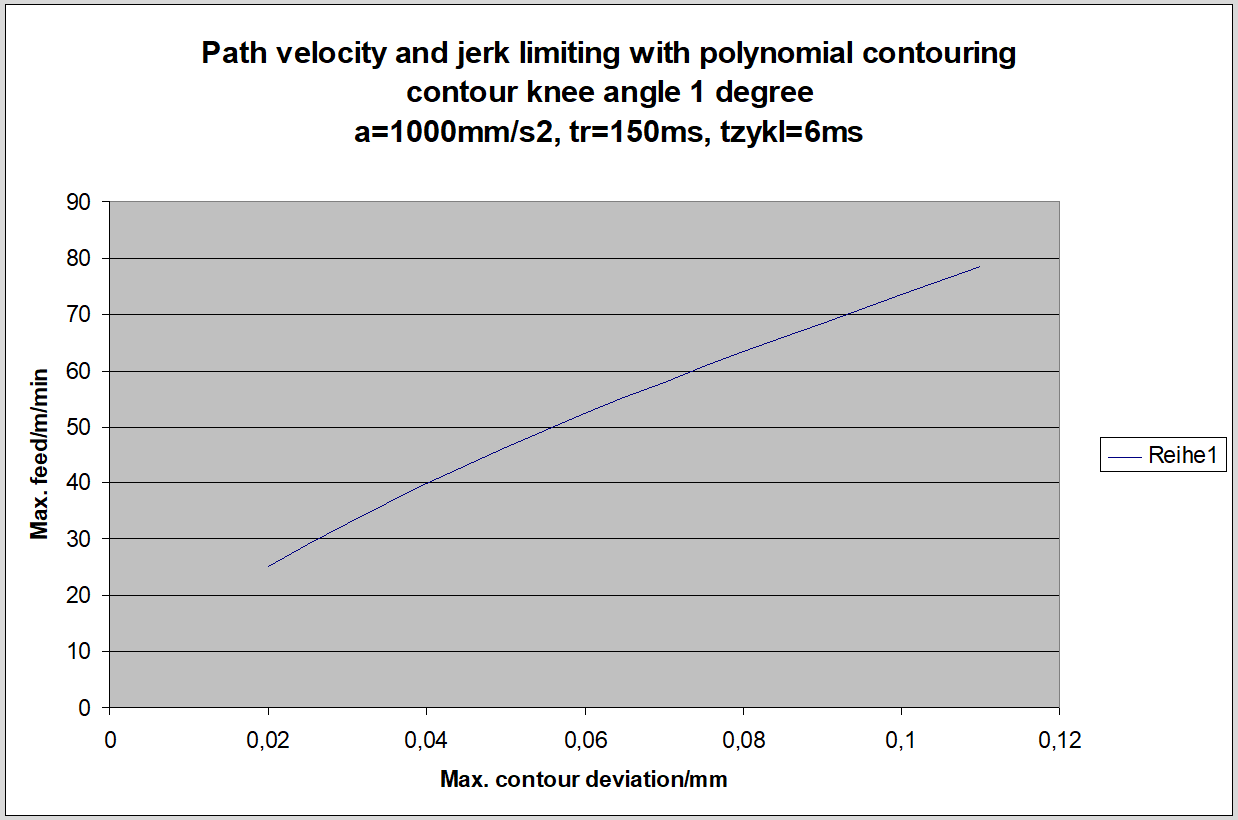Path profile with tangential continuous block transitions
Description
A jerk in axis acceleration occurs
- at linear to circular block transitions and vice versa,
- circular/circular paths with a change in radius and
- a change in direction of rotation
with tangential continuous block transitions. This is linked to a relatively large axis jerk even if the path velocity is constant. Below are several examples showing velocity, acceleration and jerk in the axes:
Example

Block transition linear block -> circular block
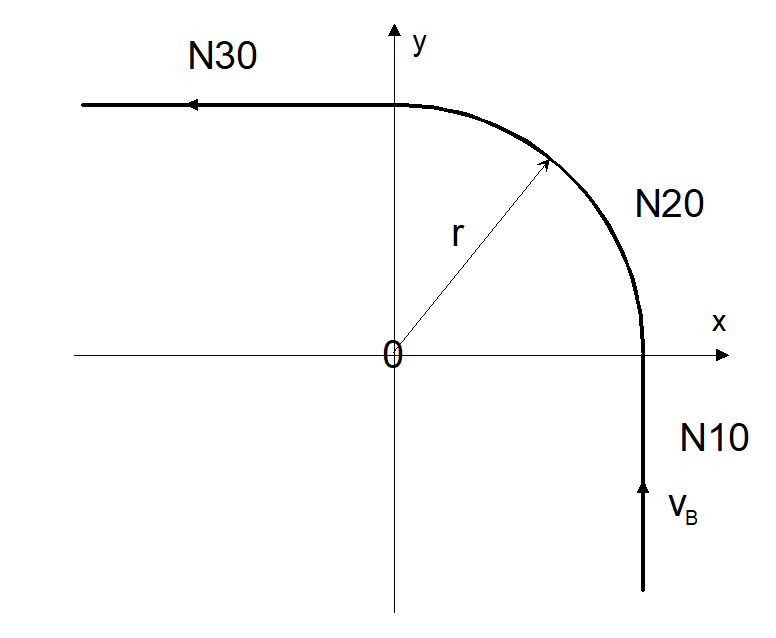

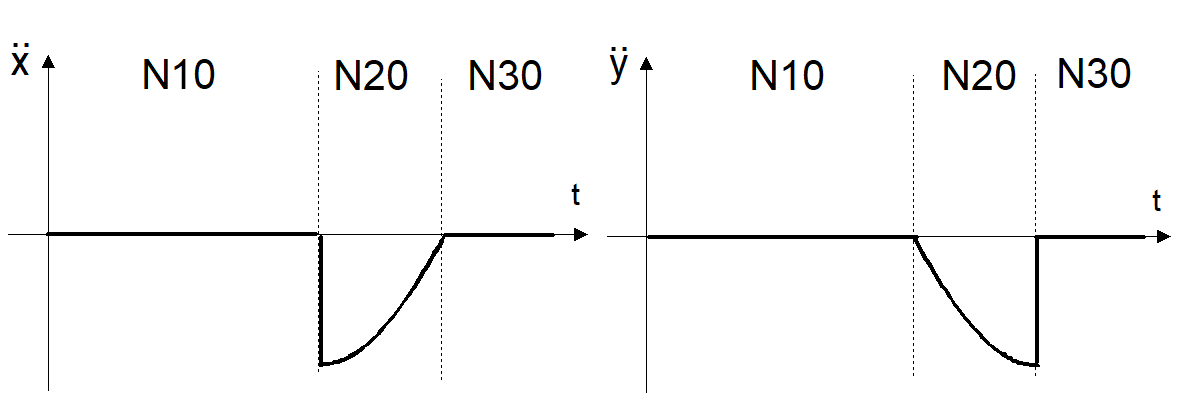

Example

2. Block transition circular block -> circular block with change in direction of rotation G03 -> G02
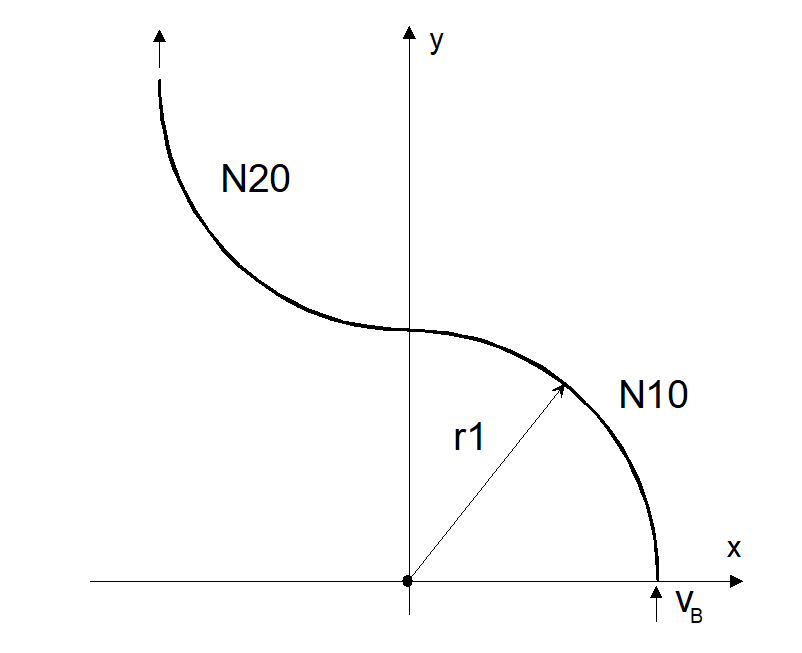
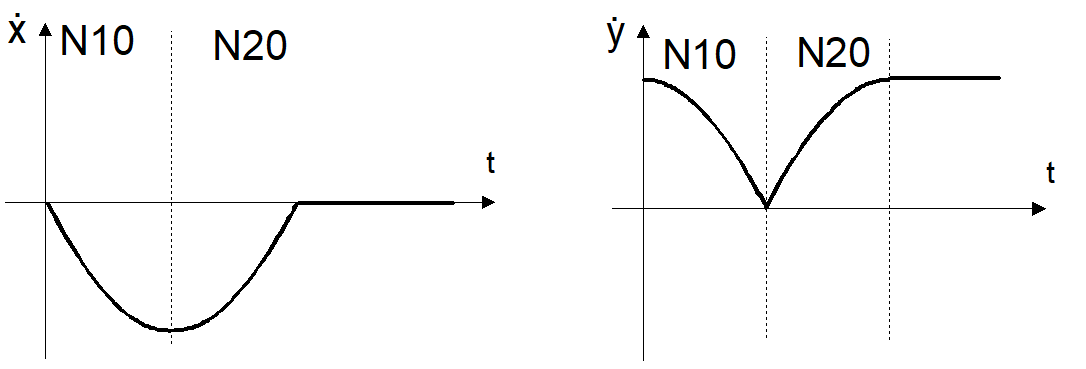
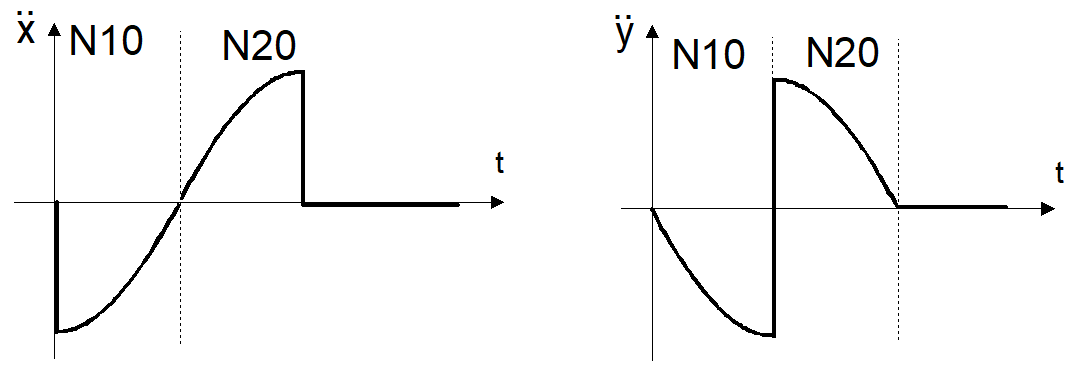
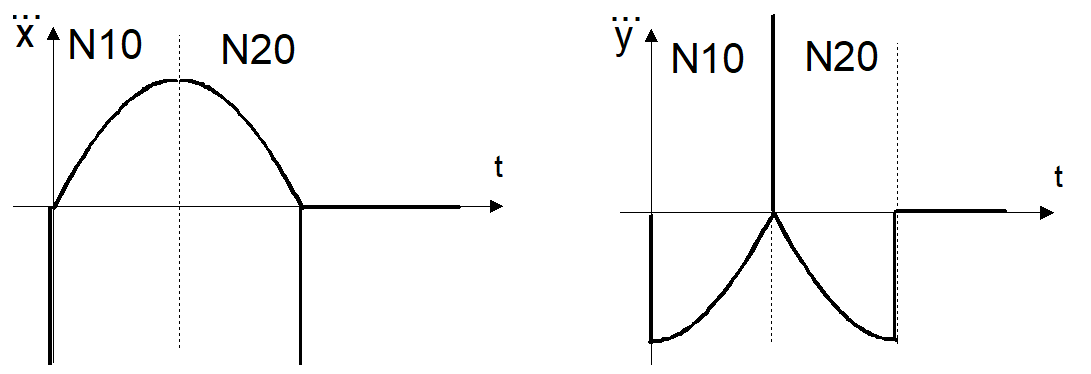
Example

3. Block transition circular block -> circular block with radius change r2 != r1
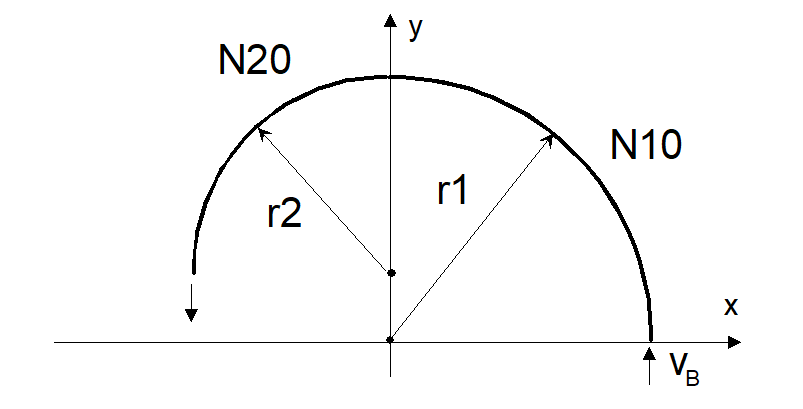
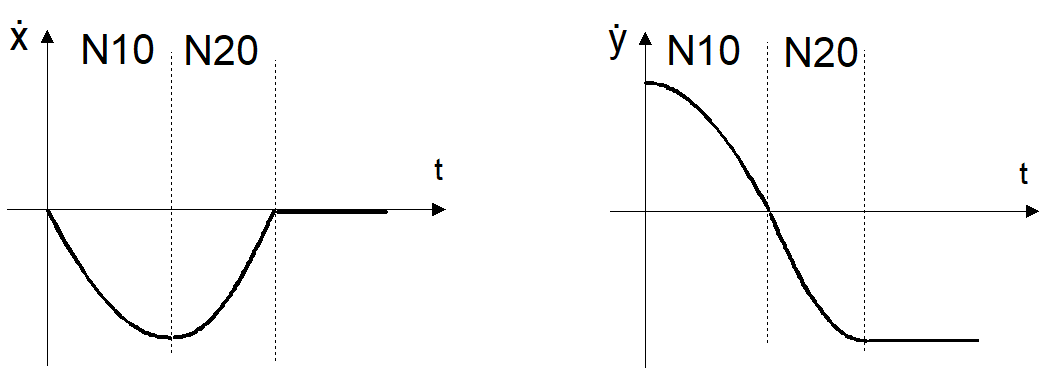
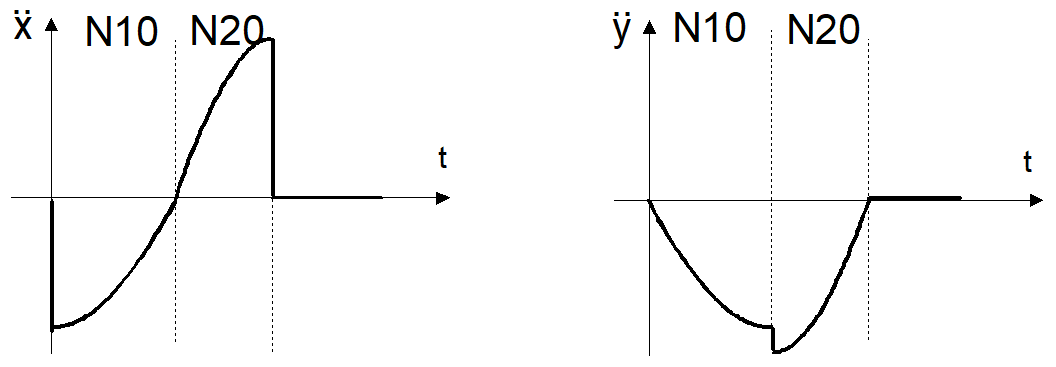
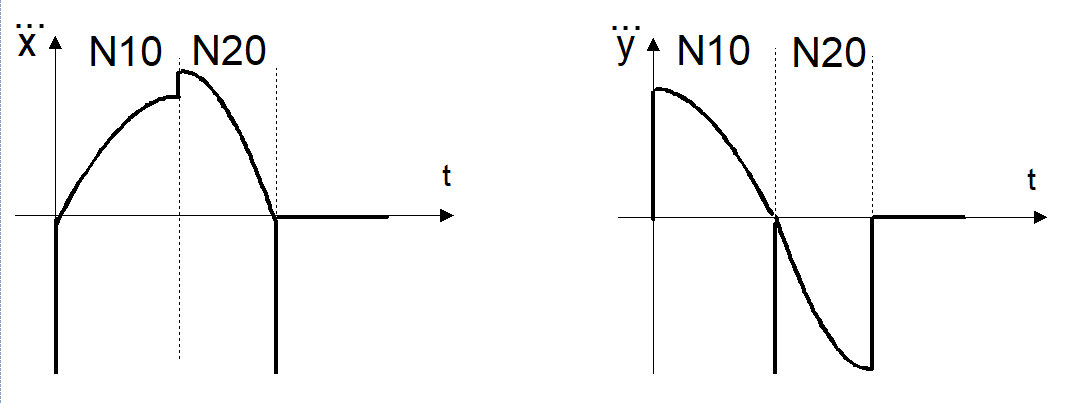
Parameterisation
Jerk limitation at tangential continuous block transitions can be activated and deactivated by the channel parameter P-CHAN-00009.
The parameter P-AXIS-00154 weights the permissible jerk at the block transition of tangential continuous paths.
The parameter value 1000 has the lowest influence on velocity at the block transition. Jerk is high and corresponds to the ratio between current acceleration and cycle time.
Values smaller than 1000 result in a further reduction in velocity at the block transition.
The value 0 leads to a velocity reduction so that the permissible jerk at the block transition is maintained based on the ramp times parameters P-AXIS-00195 to P-AXIS-00198 and acceleration parameters P-AXIS-00011 and P-AXIS-00012.
| jtrans = (P-AXIS-0004 / tr)*(P-AXIS-00154) / 1000. |
A value > 0 or a restricted jerk limitation at tangential continuous block transitions may be practical if, for technological reasons, it is not desirable for a drop to occur in path velocity at tangential continuous block transitions irrespective of the jerk setting. This may be the case, for example, in wood machining applications to avoid burn marks caused by extremely slow motion.
A value < 1000 may be practical if the machine structure is highly prone to critical vibrations and, taking technology aspects and machining time into account, if it is permissible to set a relatively low value for the path velocity at tangential continuous block limits.
The figure below shows the influence of jerk limitation on the path velocity profile for a tangential continuous path with linear and circular blocks. It is assumed that the path velocity inside the circle is reduced due to the permissible axis acceleration values.
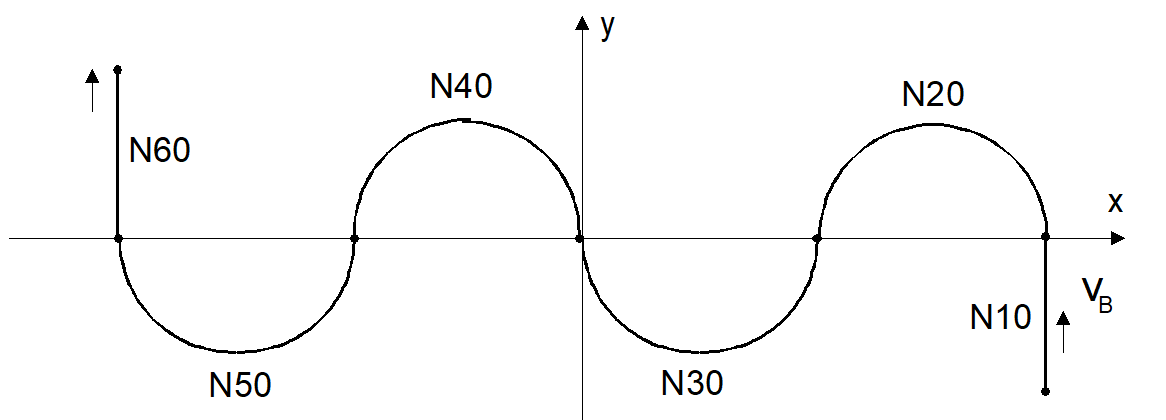


Example

Parameterisation example
Jerk limitation at block transition:
Excerpt from the axis parameter list:
getriebe[0].dynamik.a_trans_weight 0
getriebe[0].dynamik.r_trans_weight 0
Extract from the channel parameters list
corr_v_trans_jerk 1
No jerk limitation at block transition:
getriebe[0].dynamik.a_trans_weight 1000
getriebe[0].dynamik.r_trans_weight 1000
Notice

If a nominal path deviation is permitted, it is generally possible to move at a higher block transition velocity at path knees or tangential continuous transitions with activated jerk limitation by using path-influencing processes, e.g. polynomial contouring.
As indicated in the note, the diagram below shows a non-tangential continuous block transition with a knee angle of 1°. As opposed to a block transition velocity without contouring, it is possible here to move at a relatively high path velocity at the block transition in the event of a relatively small path error.
